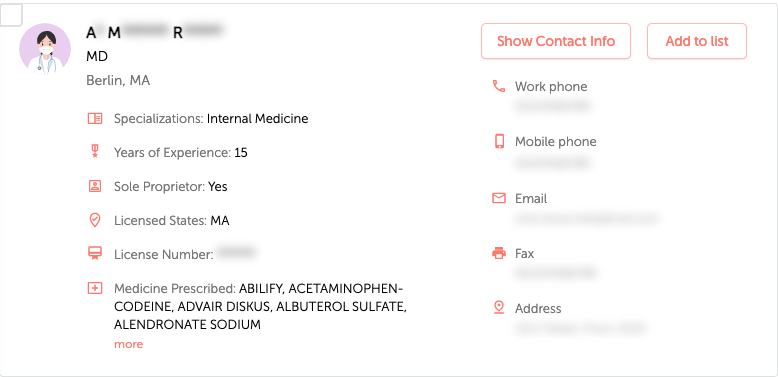The “deep tissue transformation” of the wellness industry started long before the COVID-19 pandemic. For more than a decade, wellness companies have been competing for the most innovative product award.
In the meantime, the cottage industry of corporate wellness started offering novel services like mindfulness meditation to a new generation of millennial startups.

As a $52.8 billion industry (with a CAGR of 7.0 percent from 2021 to 2028), one might say that corporate wellness companies were foresighted when the world came to a halt. Even though remote work and social distancing acted as catalysts for new technological and creative solutions, the industry’s innovative nature gave companies an edge.
Thus, in 2020 and 2021, we can see how the changes in consumer behavior and the new set of challenges and priorities inspired growth in this sector.
Virtual Corporate Wellness Solutions
The aftermath of COVID’s mental-health toll is still way away.
And the data pulled by the University of Manchester in the United Kingdom shows that we’re at the beginning of a mental health crisis. Because of the social restrictions, virtual solutions became the safest option.
However, it’s not only a question of safety but also one of well-being. And the data is showing us that these corporate programs are not only trends but a necessity. Thus, we saw the development of:
- Pinterest & Brainstorm: The Stanford Lab for Mental Health Innovation launched the Compassionate Search Project.
- Fuseproject launched Dreem, an application that provides users with a drug-free, custom-tailored solution for better sleep.
- Sweat Force started offering virtual fitness as the central pillar of its corporate wellness program. Companies like Peloton, ClassPass, Wellbeats, BurnAlong, Movement Rx, and many others jumped on the bandwagon.
The expansion of virtual solutions exploded in the past year because wellness companies push the limits on immersive experiences. The key is a high level of customization for each employee or team. The goal is overall wellness.
Wellness as a Game Experience
Another avenue wellness companies are exploring is the concept of wellness as a game experience. Or, as SonicBoom put it, gamifying wellness.
The notion might not be as novel as tracking COVID-19, but the methods and the strategies are because they are driving engagement. Using any app that tracks wellness goals and asks users to fulfill specific objectives (game jargon: quests) is a form of gamification.
Users are “tricked” into incorporating healthy habits into their lifestyles through the power of fun and exciting activities. Moreover, they get brownie points and a rush of dopamine every time they fulfill an objective.
Video games (at least the good ones) use this basic model to attract players, and wellness companies borrow it to help users lead healthy lives.
Telemedicine
The rise of telemedicine in the past year has been unprecedented, with 9 million users receiving a telehealth service from mid-March through mid-June alone.
The reasons for this growth might be obvious: the pandemic, the social distancing rules, or the cost. However, flexibility and convenience might hold the keys to the castle. Not only for the users but for the providers.
Telemedicine services can be easily adapted into the workflow, and more importantly, the quality of the service remains high. Wellness companies that develop telemedicine platforms focus on seamless integration within the EHR system.
Hence, since the pandemic, the list of companies working in the telemedicine field got bigger – the expected CAGR is shocking 25.2 percent. The industry’s key players are Teladoc, MeMD, iCliniq, Amwell, MDlive, Doctor on Demand, and soon many others.
Tracking Covid-19
A textbook example of how a company can step up during a difficult time with an innovative solution is Fitbit.
In May 2020, Fitbit announced a COVID-19 study to build an algorithm that detects COVID-19 before symptoms start. According to its findings, and with more than 100,000 Fitbit users analyzed, the company can detect nearly 50 percent of the cases one day before the first symptoms.
The benefits of this research are obvious. Moreover, the company is also tracking changes in heart rate and breathing rate connected to COVID-19. All of the gathered data is publicly available.
Digital Wellness
Another valuable byproduct of the COVID-19 pandemic is the recognition of digital wellness.
As people spend more and more time integrating technology into their lives, the effects of that integration are not always positive. Social media is more addictive than cigarettes, and the average U.S. adult will spend 44 years staring at screens.
Hence, the goal of digital wellness is to achieve balance with technology and social media. Moreover, apart from the wellness companies, even big corporations like Google started developing digital well-being toolkits.
The COVID-19 pandemic increased the overall dependency on technology, and because of that, wellness companies started developing digital wellness programs that offer modern solutions to modern problems.
Wellness companies are in a unique position to drive innovation for the next decade because the market has rapidly shifted its focus on health and well-being. Moreover, with the development of blockchain technology and AI, the possibilities for new and extraordinary products and services are massive.
It’s going to be fascinating to see where the wellness industry will take us in the next few years.







 For many organizations, the conduct of their employees is vitally important to mitigating risk to their business, leading to the use of workforce monitoring. Since the start of the pandemic, the demand for continuous workforce monitoring is on the rise. This may be, in part, due to the massive shift of work to a remote model, giving companies less visibility to the actions and conduct of their employees.
For many organizations, the conduct of their employees is vitally important to mitigating risk to their business, leading to the use of workforce monitoring. Since the start of the pandemic, the demand for continuous workforce monitoring is on the rise. This may be, in part, due to the massive shift of work to a remote model, giving companies less visibility to the actions and conduct of their employees.




 The employee experience starts with recruiting, not on day one. Tincup shared that pre-COVID, “Onboarding was the line of demarcation between talent acquisition and human resources.”
The employee experience starts with recruiting, not on day one. Tincup shared that pre-COVID, “Onboarding was the line of demarcation between talent acquisition and human resources.”







